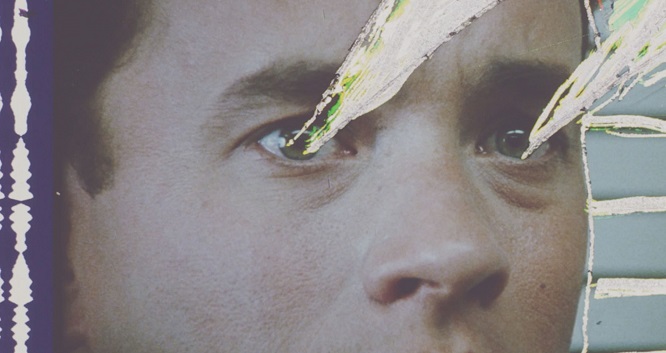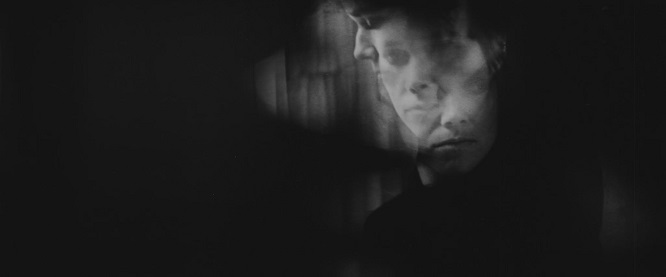

:: Uprising (2019) [Steven Woloshen]
“My life might have been passed in ease and luxury;
but I preferred glory to every enticement
that wealth placed in my path.”
— Mary Shelley, Frankenstein
Appropriation doesn’t have the same allure in today’s art scene as it did in its heyday of Bruce Connor and Arthur Lipsett, and artists who appropriate the works of others are often alienated and discredited. We use images from other films, made by filmmakers who have carefully planned and painstakingly captured them from their own real or imagined environments. We expose the illusion of permanence and immortality when we reveal the decayed emulsion discovered in dusty basements and excavated from fertile soil. By removing film strips from their logical sequences and placing them into surreal, asymmetrical, non-narrative structures, we kill the sacred narrative, ingesting the mise-en-scene, the cinematography, the editing and overall polish. We find the secret cinema of countdown leaders and perforations in trash cans, on Ebay, and in basements, regurgitating these images with our voice, stitching them together with scissors, glue and tape. Our efforts are received with blank stares and confusion. Fortunately for the future of cinema, the dumpster-divers/creators are more numerous than feature filmmakers. Since Dziga Vertov, there has been a faceoff with the natural selection of the dramatic structure of fiction and our drive to create far outweighs our sense of what is allowed, appropriate, reverent even. The generation weaned on mash-up edits will prove that the real injustice was Hollywood’s misjudgment of the appetites of the contemporary film audience.
“If you want to be a good archeologist, you gotta get out of the library!”
— Indiana Jones, Indiana Jones and the Kingdom of the Crystal Skull (2008)
I ask the reader, for a moment, to accept the following as a reasonable statement of fact: that most of the issues and objectives of narrative cinema have been, like Mount Everest, climbed and conquered. The flags planted on the summit of Mount Everest are testament to its many successful climbs, but I am still in line on the Hillary step, waiting to see which careless projectionist who will toss out another priceless roll of film. Nevertheless, as I continue my work as an independent filmmaker, I am constantly giddy with excitement when what I have aspired to create, is initially found in the dumpster, then comes to life, especially after months and years of solitary and painstaking work, hunched over a wooden bench, squinting into an incandescent light bulb. For more than thirty years, I have been climbing mountains of film, looking to plant my flag in new territories. Strangely, I have always believed that my obsessions were less like other experimental filmmakers and more like Victor Frankenstein, Mary Shelley’s delusional, guilt-ridden doctor in the novel Frankenstein. Throughout the book, Shelley raises the theme of knowledge and the consequences of the conquest of creation — obsessively rebuilding the human form, outside the legal and moral conventions in 19th century Switzerland. While I am a long way from that fictional laboratory, I still see similarities in my own arts practice.
“...one by one the various keys were touched which formed the mechanism of my being; chord after chord was sounded, and soon my mind was filled with
one thought, one conception, one purpose.”
— Mary Shelley, Frankenstein

:: Decasia (2002) [Bill Morrison]

:: Outer Space (1999) [Peter Tscherkassky]
To put Dr. Frankenstein’s unnatural method of “borrowing” material into the perspective of a filmmaker, consider today’s brilliant found footage films, orphaned films and other film essays re-purposing appropriated images. Do you think that Bill Morrison felt empowered by that dangerous taste of grave-robbing when he created his masterpiece film Decasia (2002)? I have experienced that feeling: in my second undergraduate year at Concordia University, I found 25 feet (no more than the length of a MacDonald’s TV commercial, by 1982 standards) of 16 mm test footage in an editing room garbage can. I can honestly attest that my inner monster became empowered by that lost leader, which had been abandoned by one of my fellow film students. How could I grant this strand of film the gift of life while others considered it unworthy of the projector’s beam? I seized a brutal combination of knives and electricity to create my third 16 mm abstract animated film Pepper Steak (1984) with footage that was so easily dismissed by others. In Peter Tscherkassky’s haunting film Outer Space (1999), he created dense images of multi-exposed light painting built from the body and faces captured in the frames of his found footage. Did that experiment remind Tscherkassky of layered tissue, flesh and skin grafted with light and electricity borrowed from other B-movie narratives? When I finished Father Knows Father Best last year, I perceived my handmade superimpositions as more like cave spelunking; crawling through the darkness, witnessing only what my flashlight revealed.
Apart from sharp objects and light beams, the film splicer and the optical printer are two other tools favoured by the found footage filmmaker. The optical printer, in particular, with its sinister tell-tale heart, c-l-i-c-k-i-n-g frame-by-frame and its matte black, steam-punk bellows, re-animates lifeless, forgotten images from random fragments pasted on the emulsion. In my case, I couldn’t have made films like Chronicle Reconstructions (2008) and La Dolce Vita (2008) without the optical printer. With every click of the shutter, I stitched together all the loose ends, establishing a new frame. When I first saw Stan’s Brakhage’s bricolage classic Mothlight (1963), I perceived the optical printer and film projector as having re-animated the lifeless wings of dead moths.
As Hollywood rids itself of brick-and-mortar film vaults, the found footage, mash-ups, and re-purposed film creations have become increasingly numerous. If we want to continue to find new audiences for orphaned films, it is our responsibility to show future generations how to bypass the legal challenges, wear the hat of a mad scientist and give life to forgotten images and sounds. Found footage… I have only begun to scratch the surface.
:: La Dolce Vita (2008) [Steven Woloshen]
*
Steven Woloshen was born in Laval, Canada in 1960. For more than 30 years, he has passionately created over 50 award-winning, abstract films and time-based installations for festivals, galleries and museums. Twice nominated for Canada's Governor General's award, he has received numerous research and creation grants and, most recently, was awarded the 2016 René Jodoin lifetime achievement award, 2015 Wiesbaden Lifetime Achievement Award. Woloshen is a teacher, film conservationist, animator, craftsman and the author of two books, Recipes for Reconstruction: The Cookbook for the Frugal Filmmaker (2010), a hands-on manual for decay, renewal and other handmade, analogue film techniques, and Scratch, Crackle & Pop! A Whole Grains Approach to Making Films without a Camera (2015). Under his own banner, Scratchatopia, Woloshen has hosted solo retrospectives and taught handmade filmmaking techniques at workshops and master classes in Argentina, Morocco, USA, Slovenia, Australia, France, Great Britain, Greece, Portugal, Spain, Slovakia, Poland, Mexico as well as across Canada.
 |
envoyer par courriel | 
| imprimer | Tweet |
